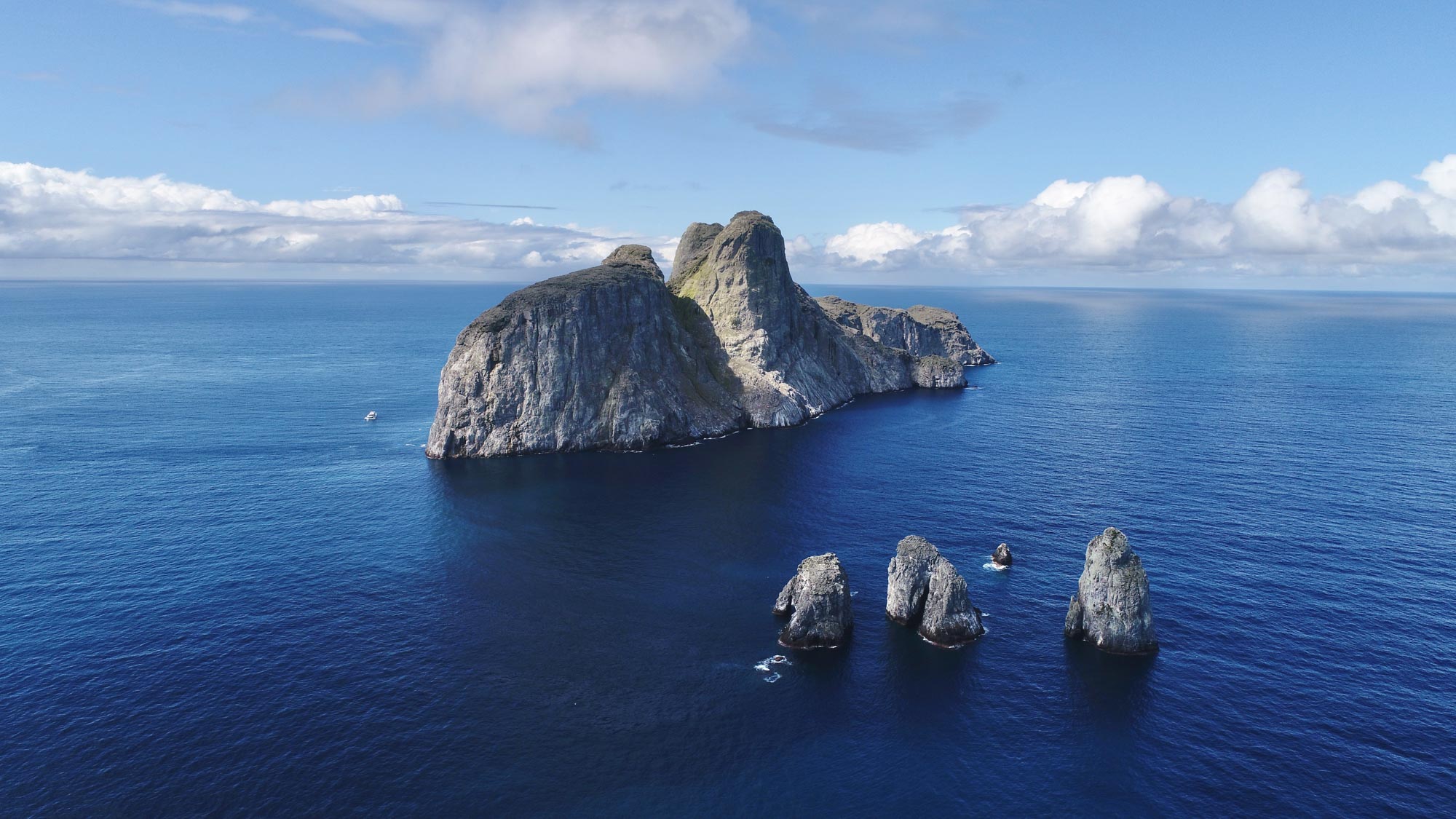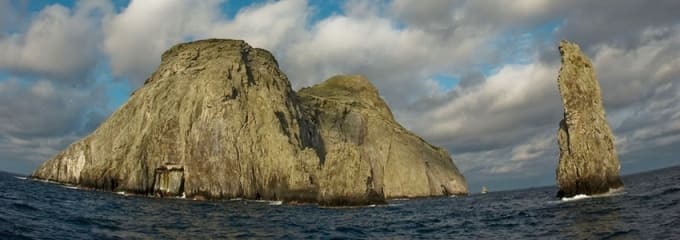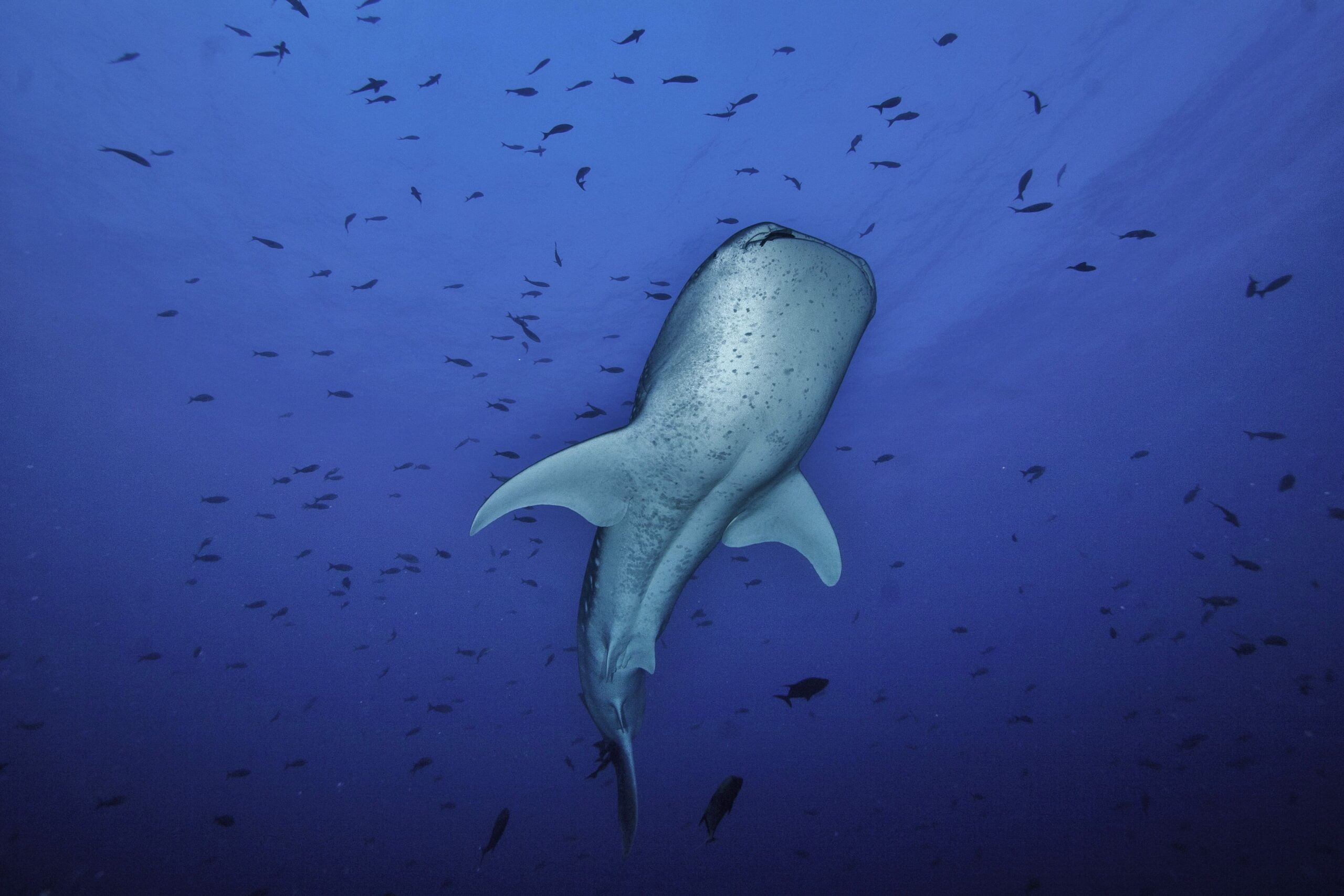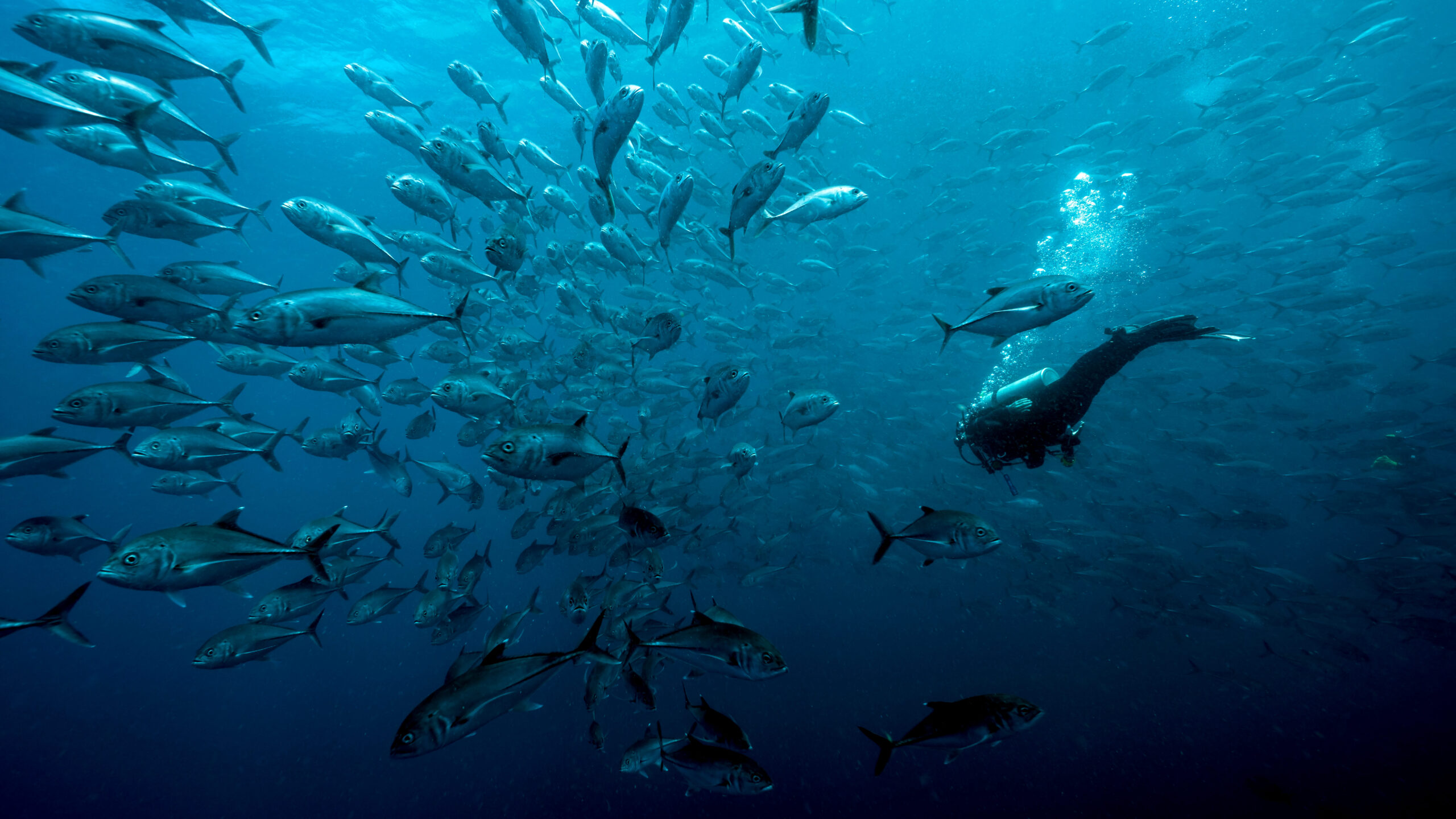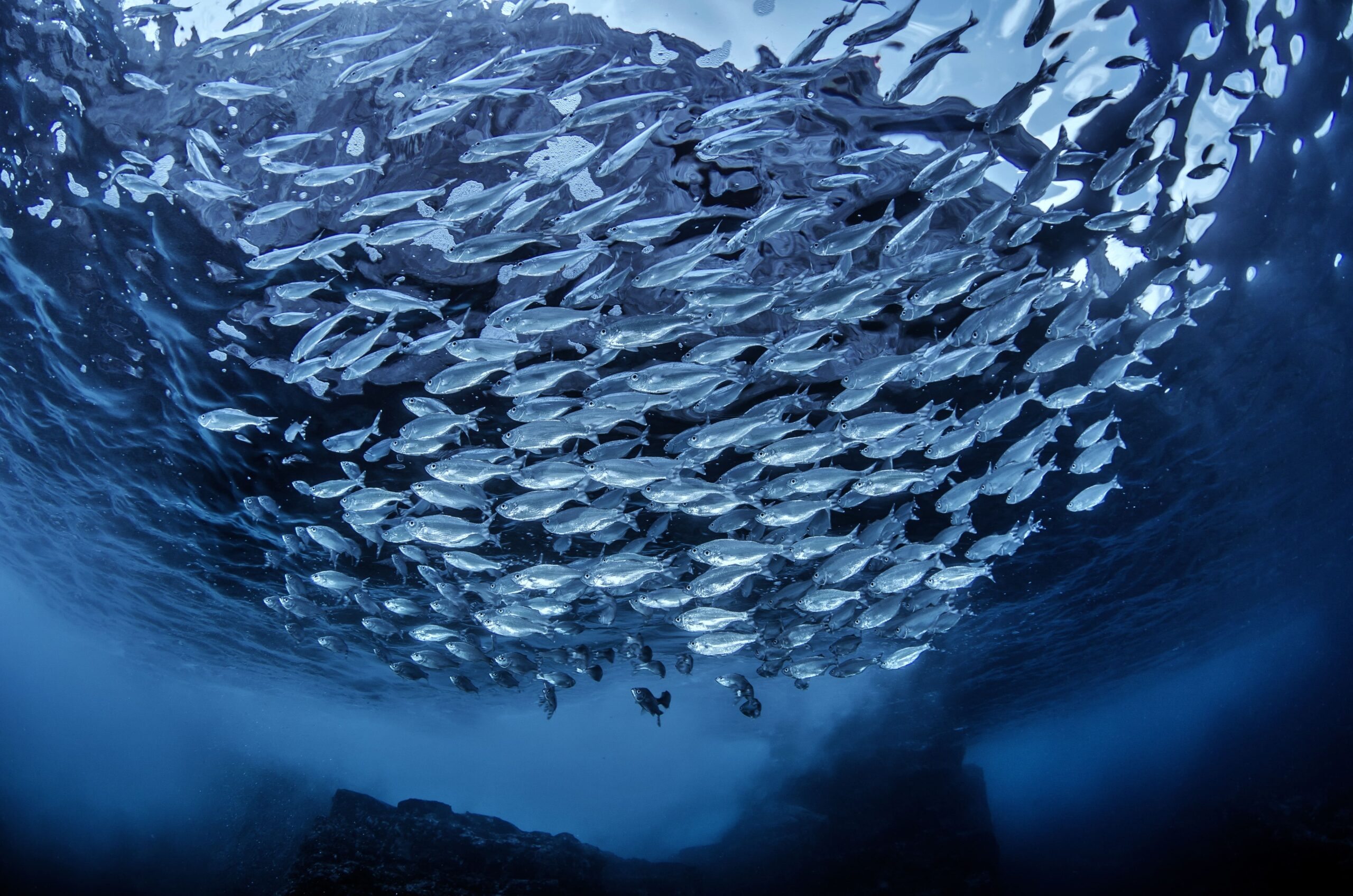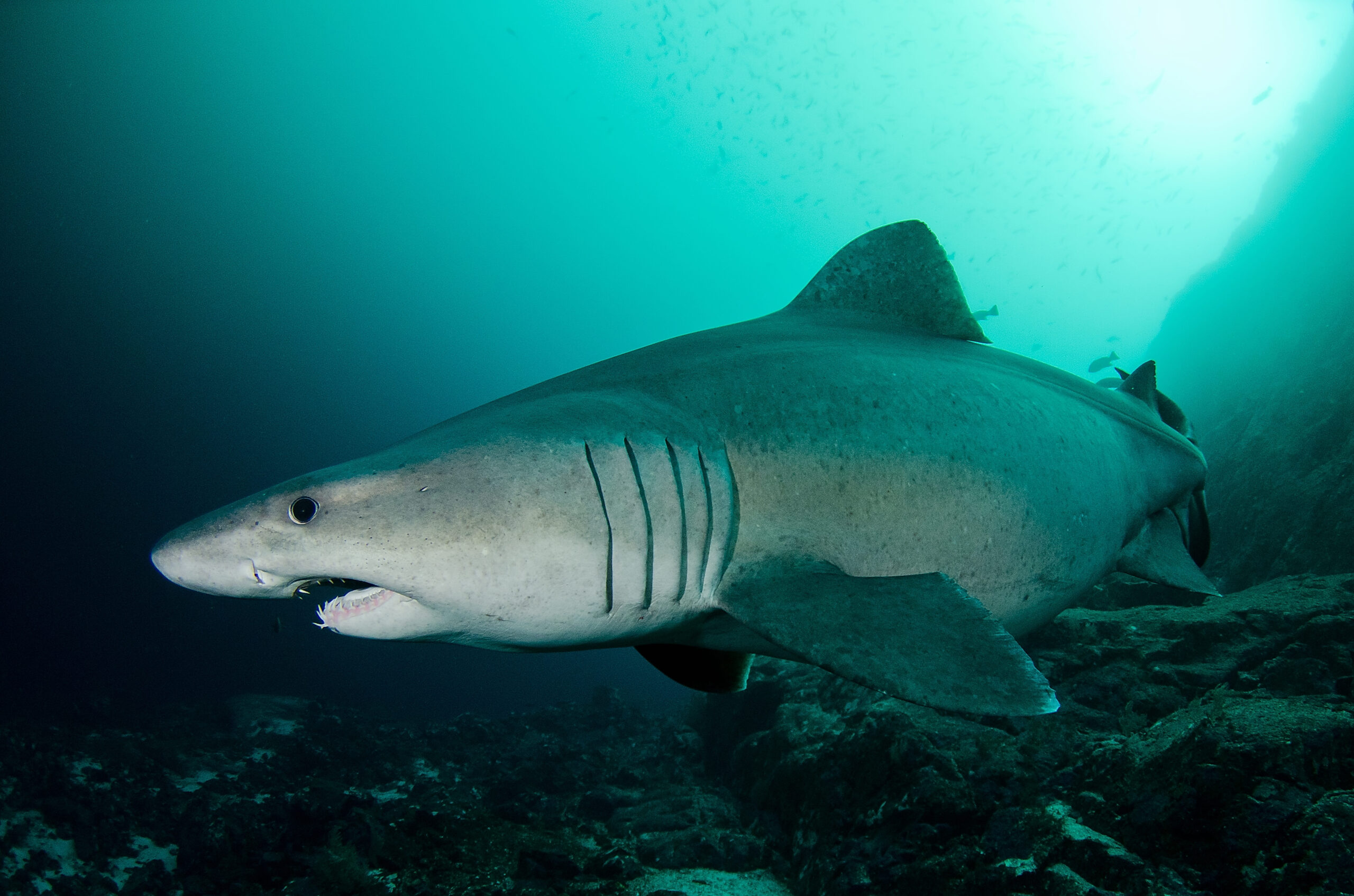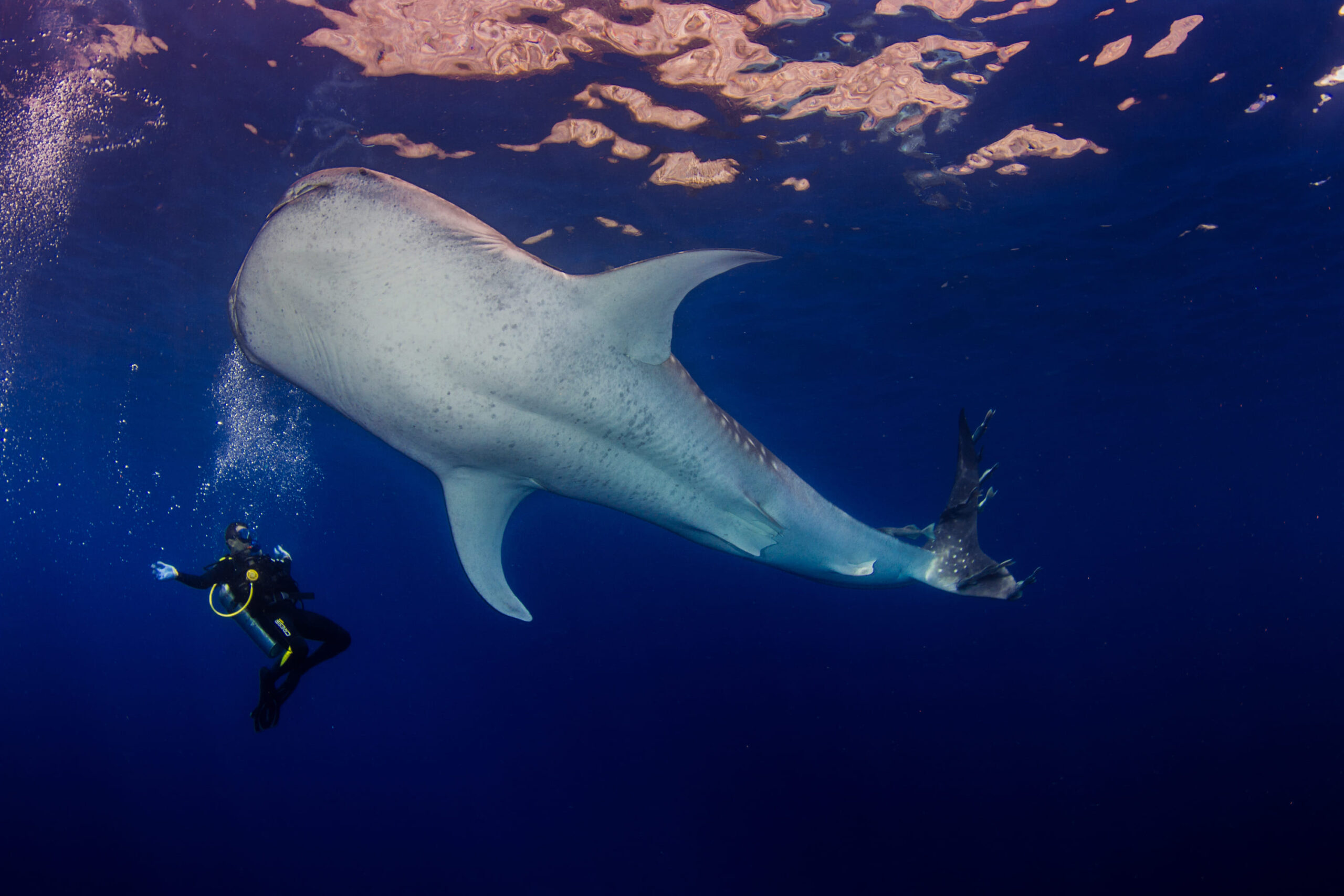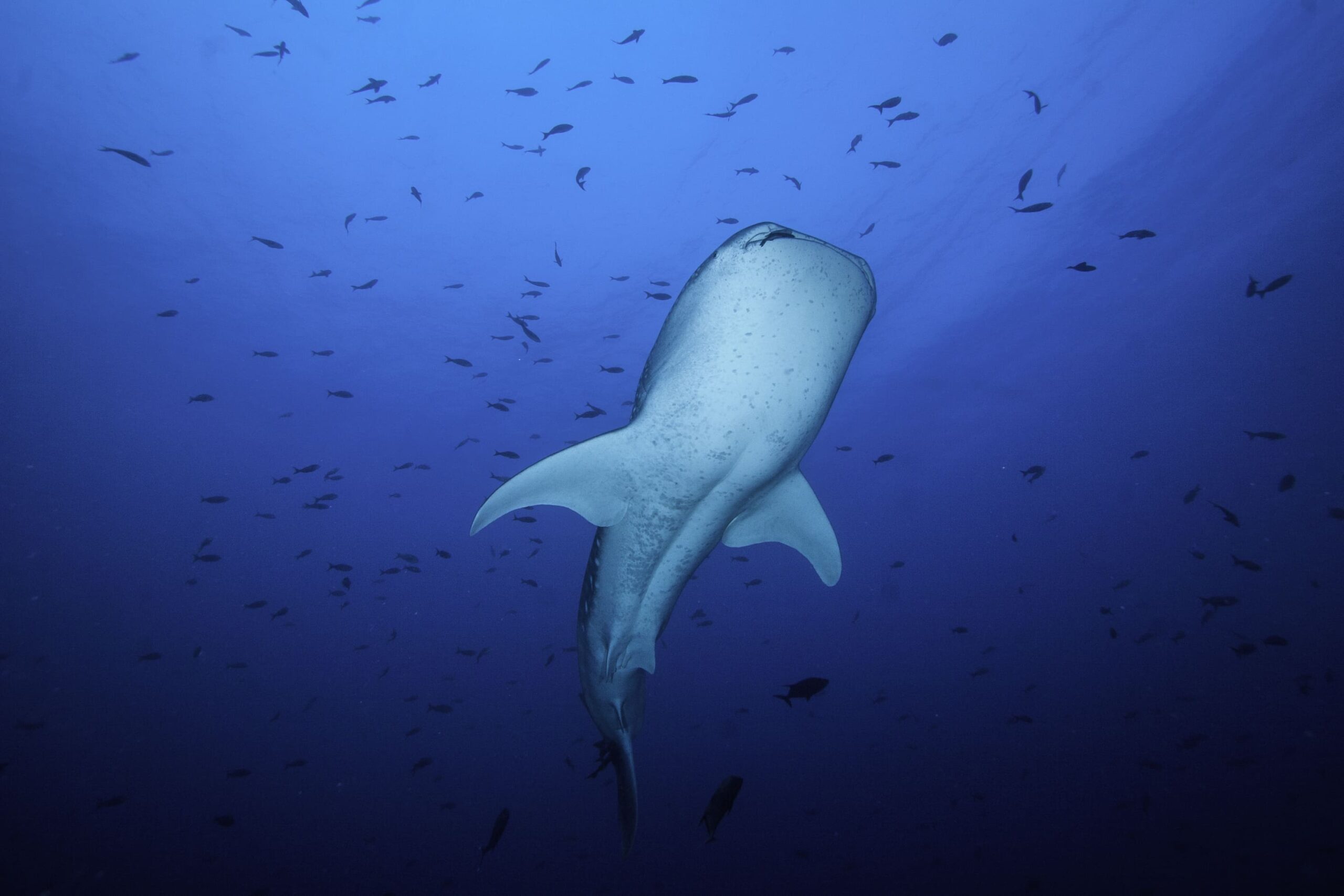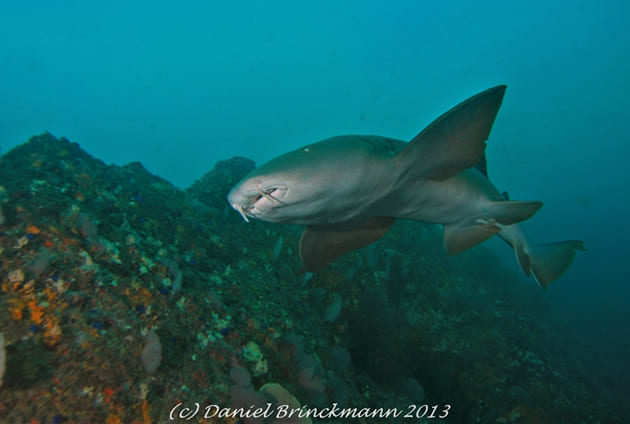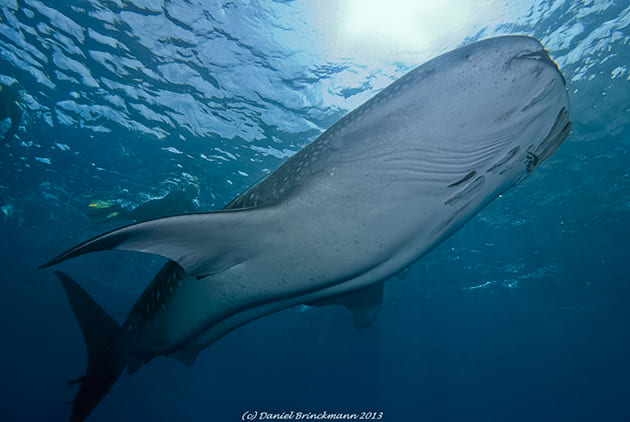Simply stated, this is a WOW destination. “Electrifying” is as close as I come to finding a word describing my feeling about diving here. My heart pounds as if it’s likely to jump out of my chest as I’m surrounded by the madcap parade of enormous sharks. When conditions are right, you can see more sharks amassed together here than in any other place on the planet. The thrills are limitless for experienced divers.
My first experience at Malpelo was on the Argo, part of the Undersea Hunter group of liveaboards, which used to regularly visit Malpelo Island in combination with cruises to Cocos Island. Due to the long and often arduous crossing between Cocos and Malpelo, the Undersea Hunter boats are now concentrating solely on Cocos expeditions, having left the Malpelo field open to other enterprising liveaboards.
